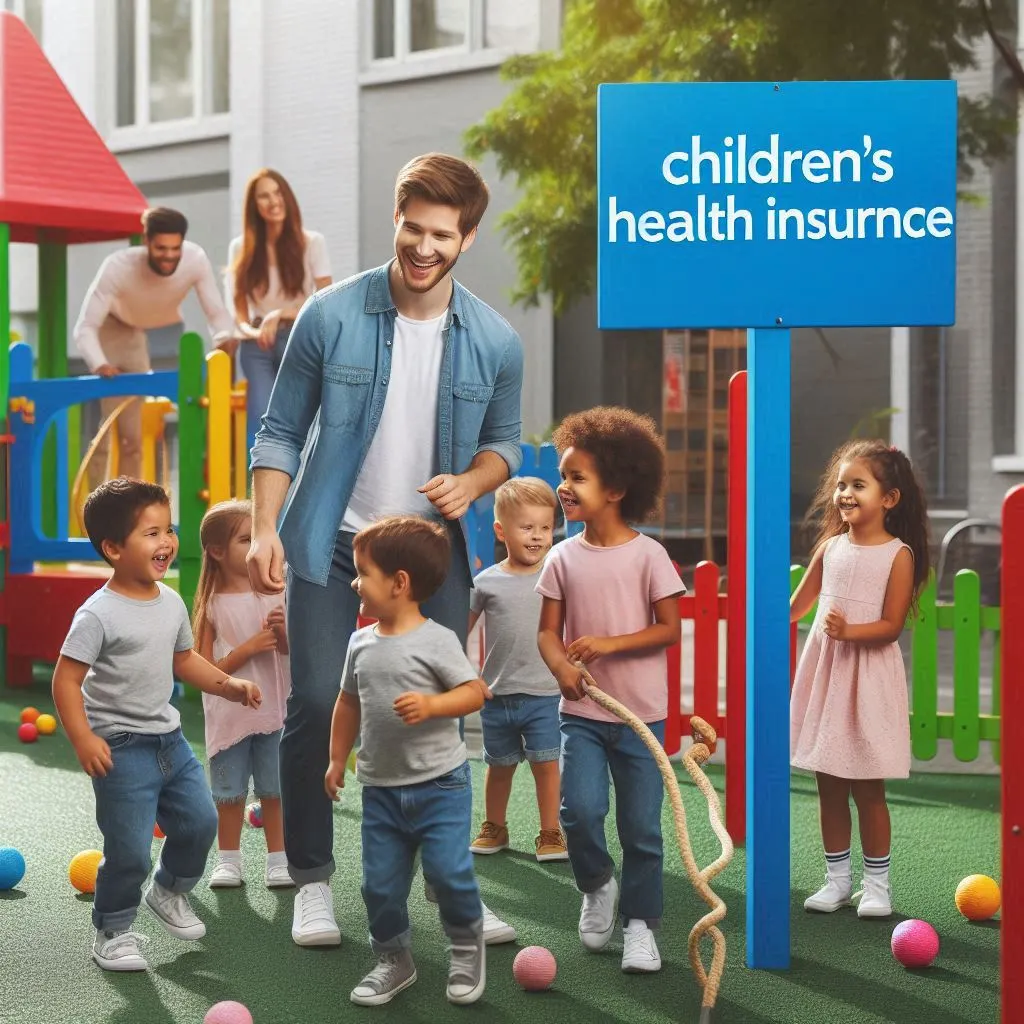private health insurance of children’s program happiness 2024
Table of Contents
Children’s Health Insurance Program explained
The need for health insurance coverage is already a daunting topic, and it becomes even bigger when it comes down to kids. After all, there’s nothing else a parent would want but the best for their child. Of all the options available, the closest thing to the best insurance without the overheads is called Children’s Health Insurance Program.
What does it mean? Such a program was designed as a homely-lifeline for those families that seemingly earn too much to qualify for Medicaid but can’t afford private insurance. As such, think about CHIP as a “there’s in case” safety net for your child to never go without healthcare services necessary. Considering a usage example, let’s take an average single parent that works two jobs but still can’t afford the sky-high insurance premiums.
Programmed cover the benefits and give the custodian a peace of mind and a relief about the child’s furthering for the future. And it’s not only about “taking to the doc” part: CHIP also covers all, starting with immunisation and finishing up hospital stays and emergency maintenance. With Program, you can keep on nurturing.
How it Affects Families Across America: CHIP is bringing more than just numbers to families across the country. This is kids getting a care they need. Take the Jones’s, where are the parents in Ohio. Before they got their family hooked up on CHIP, some months there might be a very tough situation when their daughter would get bad maths and they would have to choose between keeping the lights on or taking soaking to a doctor.
Now that they have CHIP their daughter gets the asthma treatment she needs. But we are not talking about a “policy” here. This is life-or-death for many families. The life, where parents do not have to compromise a decent standard of living in exchange of sick child. CHIP helps free up budget to families to help bring in a little more certainty in the lives of sick children.
And the impact is clear; in healthier children, missing fewer days of school and having better health as they grow older. It’s a necessity for working families providing more than just a simple life support.
How Family Cash Assistance Works: The Nuts and Bolts CHIP may sound complicated, but it was designed for families in need, and it works so they can get the help they need. In a nutshell, CHIP is a state program. This means that for each family, the details of what exactly CHIP looks like depend on where you live. All the same, the general principles are the same.
Families apply through their state’s Medicaid office. This can be done online, by phone, or in-person. The most popular eligibility factor is income, but each state has its own guidelines for how much you are allowed to earn and still qualify for CHIP. Children then receive a wide range of services.

For example, here in Texas, they can go to the doctor for their annual check-up, the dentist to get their teeth cleaned, the eye doctor, and pick up a prescription for an infection – all paid for by CHIP at little-to-no cost to the family. The point of these benefits is to have a wide range of preventive care available.
Preventive care means care you can get before you are sick – it is one way that doctors and dentists find out that you are sick early enough to fix the issue. Families have to go through as little work as possible to enrol in this care-making healthcare as easily available as it can be to kids who need it.
Chip real life success stories
As we now know, the benefits of CHIP are widespread and transformational. Lets take a look at some examples from real life that further reinstate this fact… Take the Garcia’s of California as an example. Diego, their son, was diagnosed with type 1 diabetes at age seven. Without CHIP, it would have been nearly impossible to manage his condition due in part to the skyrocketing cost of insulin and frequent doctor visits.
Because of CHIP, Diego is able to get his medication and see a specialist who he already knows well so goes directly into their care without missing an appointment or adjustment in dosage while waiting for the marketplace/medicaid alignment with specialists to come together again. His parents have also been allowed time off periodically when there has needed physical arrangements made due higher risk situations (for example the stairs broken at home so can’t bring patient up/down).
It is not just a health program — it has been Diego’s lifeline to living an ordinary, active life. In Florida, The Johnson are another motivating story. Lily, their daughter, would require surgery for a congenital heart defect. With CHIP, they could pay for the surgery and all of the necessary after-care.
These stories are reminders of how important CHIP is for ensuring that kids have complete healthcare when they might otherwise go without any at all. It is not just about making sure they receive medical treatment — it’s also giving them the opportunity to be kids.
CHIP in the Future: Challenges and Opportunities
Prediction: CHIP’s challenges and potential future The greatest concern continues to be funding, as the program depends on a combination of federal and state funds. Changes in power can make funds less stable and harder to access creating vulnerability for families who rely on CHIP. But there are also many low hanging fruits to harvest.
Growth on both the outreach and educational fronts regarding CHIP can ensure families getting that are qualified, establish it Patients can also have these applications and renewals digitised, allowing families to enrol in coverage more effectively.

The aforementioned ways include developing a user-friendly mobile app for CHIP services facilitating easy information and benefits access. Further, deepening the connection between CHIP and other social services may allow a fuller response to children’s health beyond what is currently offered. If we tackle these problems and capitalise on these opportunities, then CHIP will be even more successful in protecting the health of America’s kids.
Steps to CHIP for Parents
But have no fear, if you are a frustrated parent looking to jump start your initiative into CHIP it really is not that complicated. Start by looking at your state’s CHIP website, or contact the Medicaid office in your state to find out if you qualify based on income. States have their own application process, but most states include options to apply:
Online Phone By mail In person You may need to provide information about your income, the number of people in your household and any other health insurance you already have. If you apply, it usually takes a couple of weeks for approval. You may be asked for more paperwork in this period. If accepted, we will send you details about your child’s cover as well so he/she is able to use the coverage.
This contains information about locating providers, appointments and in the event of an emergency. If there is confusion over any part of the process, feel free to ask questions. If you struggle with this process, your CHIP agent is there to assist in guiding and advocating for lived experiences of care.
Children’s Health Insurance Program (CHIP)
FAQs
1. What is CHIP?
CHIP = Children’s Health Insurance Program A government program that offers health coverage for children in families who earn too much money to qualify for Medicaid, but still cannot afford private insurance.
2. Who is eligible for CHIP?
CHIP eligibility varies by state, but typically covers children under 19 years of age with family incomes up to twice the federal poverty level. States will have different income limits, with some having higher income thresholds.
3. What Does CHIP Cover?
Services covered by CHIP include: routine check-ups, immunisations and doctor visits, prescriptions and dental/vision care; inpatient & outpatient hospital care as well laboratory services/X-rays/… emergency?
4. How do I apply for CHIP?
You can fill out a CHIP application through the embroilment portal maintained by your state’s Medicaid office. Applications can be submitted via online, phone mail or in-person. The process will ask for details on your income, the number of people in your household and your current health insurance.
5. Cost of CHIP coverage?
The CHIP pays for emergency room visits, well-child checkups and many other health care services covered by Medicaid in each state. For example, some states may have you pay a monthly premium or co payments for certain services, however these costs are usually much lower than what would be required by private insurance.
6. Can CHIP coverage be denied?
If your income exceeds the eligibility limit set by your state or if you cannot provide required documents, then you can be denied CHIP coverage. Every state has unique eligibility requirements for Medicaid protection.
7. CHIP coverage can start within 15 days (for the states that use a fee-for-service approach) or, in many cases:
Processing times for CHIP vary, but it typically takes several weeks from the time you apply until a decision is made. At this time additional paperwork might be required of you during an audit.
8. Can I have other health insurance and still receive CHIP benefits?
The vast majority of children served by CHIP get insurance through the program because they do not have access to other coverage. Yet some states accept kids who already have insurance provided that it does not cover all the medical services they need.
9. CHIP Verses Medicaid
Although both CHIP and Medicaid offer health coverage to low-income families, only children in families with incomes too high for Medicaid are eligible for enrolled. For example, Medicaid eligibility (programmed through the Internal Revenue Code) can generally be claimed by a larger number of adults or people with disabilities.
10. If I get CHIP for my child and then have a change in income, what do I need to do?
If your income changes after enrolling a child in CHIP, you must inform the state’s Medicaid office. The coverage will not last forever, and depending on the kind of change is made to your child they could still qualify for CHIP but may need other type a health insurance







